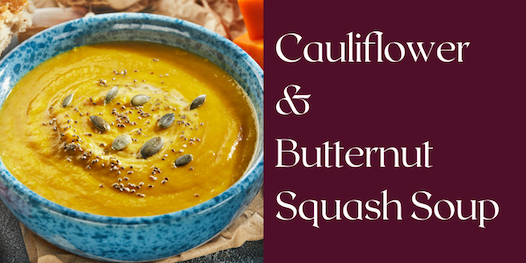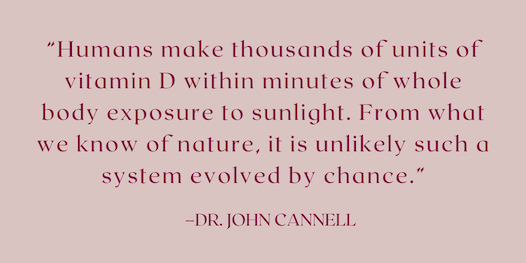In this month's Food as Medicine Issue, I'm diving into the topic of nourishing strong bones - in both women and men. While most of the attention on bone health typically focuses on women, men are also at risk for osteoporosis. Not only do one-third of all hip fractures happen in men, but men also have a higher first-year mortality rate with hip fractures than women. Building strong bones is something everyone can do. And strong bones need more than just calcium!
Know someone who could benefit from this topic? Share my newsletter with them and suggest they subscribe!
-Stephanie
|
|
|
Building Blocks for Bones
|

Calcium: Calcium is a mineral that serves as the building block for healthy and strong bones. In addition, calcium is essential for healthy nerve and muscle function, enabling your blood to clot, muscles to contract, and heart to beat.
Since your body cannot produce calcium, consuming calcium-rich foods is important. The truth is if you don't consume enough calcium to support what your body needs, it's taken from your bones. Inadequate calcium consumption leads to bone loss, low bone density, and even broken bones. And for these reasons and more, calcium is fundamental for bone health.
Foods sources:
- Milk (skim, low fat, whole) - 1 cup - 300 mg
- Soy milk, calcium-fortified - 1 cup - 200 to 400 mg
- Almond milk (with added calcium) - 1 cup - 450 mg
- Rice milk (with added calcium) - 1 cup - 283 mg
- Broccoli, cooked - 1 cup - 180 mg
- Spinach, cooked - 1 cup - 240 mg
- Figs, dried, uncooked - 1 cup - 300 mg
- Tofu, firm, calcium set - 4 oz 250 to 750 mg
- Almonds, toasted unblanched - 1 oz - 80 mg
- Sesame seeds, whole roasted - 1 oz - 280 mg
- Salmon, canned, with bones - 3 oz - 170 to 210 mg
- Blackstrap molasses - 1 Tbsp - 135 mg
Pro tip: Spreading calcium-containing foods throughout the day helps ensure that the maximum amount of calcium is absorbed. General guidelines for calcium needs are:
- Children ages 4 to 8 need at least 1,000 milligrams of calcium a day.
- Children ages 9 to 18 need at least 1,300 milligrams of calcium a day.
- Adults ages 19 to 50 need at least 1,000 milligrams of calcium a day.
- Women over age 50 and men over age 70 need at least 1,200 milligrams of calcium a day.
Vitamin D: Consider vitamin D as calcium's partner for maximum absorption. The two work synergistically to help your body absorb bone-boosting calcium. One of the best ways to get vitamin D is to spend 10-15 minutes in the sun at least three times a week; this is especially important during the winter months!
Food sources: tuna, salmon with bones, sardines, eggs, as well as fortified foods such as cereal, orange juice, milk, and milk substitutes
Pro Tip: The recommended daily amount of vitamin D is:
- For children up to 12 months: 400 international units (IU)
- For people 1 to 70 years: 600 IU
- For people over 70 years: 800 IU
Vitamin K: Vitamin K works with calcium and vitamin D to boost bone density.
Food sources: beef liver, green tea, kale, broccoli, swiss chard, and spinach
Pro Tip: If you're on a blood thinner, be sure and talk with your doctor or dietitian about how much Vitamin K-containing foods to eat each day.
Potassium: While potassium doesn't necessarily pump up bone strength, it does help remove waste from your cells, neutralizing acids that deplete calcium stores.
Food sources: winter squash, sweet potatoes, white potatoes (with the skin on), white beans, yogurt, halibut, broccoli, and bananas
Pro tip: Consume a plant-based diet to ensure optimal potassium intake to support health and strong bones.
Magnesium: Magnesium is an essential mineral and plays a role in converting vitamin D into its active form. Think of it simply as magnesium enables vitamin D to absorb calcium.
Foods sources: pumpkin seeds, beans, whole grains, almonds, avocados, figs, spinach, cashews, peanuts, soybeans, and dark chocolate
Pro tip: Studies have indicated that postmenopausal and older women who increase magnesium intake might have an increase in bone mineral density.
|
|
|
5 Lifestyle Habits for Strong Bones
|

- Participating in weight-bearing activities keeps you healthy and your bones strong. Examples include: running, walking, skiing, weight lifting, pilates, yoga, tennis, pickleball, golf, hiking, stair climbing, and more!
- Reduce caffeine consumption: Too much caffeine intake can interfere with your body's ability to absorb calcium. There's no need to cut out caffeine completely, but if you have your Cup of Joe, be sure to get enough calcium. And, to optimize calcium absorption, don't drink or eat calcium containing-foods with caffeine-containing drinks.
- Drink alcohol in moderation: Heavy alcohol consumption can interfere with your gut's ability to absorb calcium and vitamin D, the two essential nutrients for strong bones. If you drink, women should have no more than one drink per day, and men have no more than two.
- If you smoke, stop: Studies have found that smoking can interfere with the body's ability to absorb calcium, resulting in an overall decrease in bone mass. If you do smoke, this is one more reason to STOP!
- Some medicines can weaken your bones; therefore, always talk to your doctor about medications that may impact your bone health.
|
|
Featured Recipe
Recipe of the Month: Cauliflower & Butternut Squash Soup
|

- 1 leek, cut into ½-inch-thick rounds
- 1 head cauliflower, cut into 1-inch florets
- 8 ounces peeled butternut squash, cut into ½-inch dice
- 3 tablespoons extra virgin olive oil, divided
- 2 teaspoons fresh rosemary, chopped
- 1/2 teaspoon kosher salt
- 1/4 teaspoon black pepper
- 1 clove of garlic, minced
- 4 cups low sodium chicken or vegetable broth
- 1/2 cup milk
- Optional garnish: roasted pumpkin seed and chia seeds
- Preheat the oven to 425°F.
- Clean leaks by breaking them into small rings, placing them in cold water and remove dirt. Drain well in a colander.
- Toss leeks, cauliflower florets, and squash in 2 tablespoons of the oil. Add rosemary, salt, and pepper. Transfer to a large baking sheet and bake for about 25 - 30 minutes, or until vegetables are golden.
- In a large dutch oven or saucepan, heat the remaining 1 tablespoon of oil over low heat. Add garlic and cook for about 30 to 60 seconds. Add cooked vegetables and broth. Cover and bring to a low boil. Simmer for 5 minutes. Remove from heat, stir in the milk, and let cool slightly.
- Transfer to a blender and puree in batches until very smooth and creamy or use an immersion blender to puree the soup. Season with salt and pepper to taste and serve with optional toppings.
Serves 6
Nutrition Information per Serving (1 1/3 cups): 130 calories, 7g fat (2g saturated), 480 mg sodium, 14g carbohydrate, 4g fiber, 3g protein
|
|
|
Be Inspired
|
|

|
|
|
About SO Nutrition
|
 Stephanie Leipprandt Ouellette, MBA, RDN, LD
Stephanie Leipprandt Ouellette, MBA, RDN, LD Stephanie has been working in the field of nutrition and dietetics since 1995. She earned a Bachelor of Science degree in Dietetics from Michigan State University, completed an Approved Pre-Professional Practice Program at Western Michigan University and earned a Master of Business Administration from Baker College. She’s been a Registered Dietitian Nutritionist since 1996 and licensed in Texas since 2007. In 2008, Stephanie earned her certification in Childhood and Adolescent Weight Management. Stephanie has extensive clinical & managerial experience, both in corporate settings and in the community. Now she wants to share her knowledge with you, because most (if not all) nutritional habits begin at home.
Stephanie and her family reside in Katy, Texas
|
|
| |
Copyright © 2022 Customized Nutrition Newsletters, All rights reserved.
|
|
| |
|
|